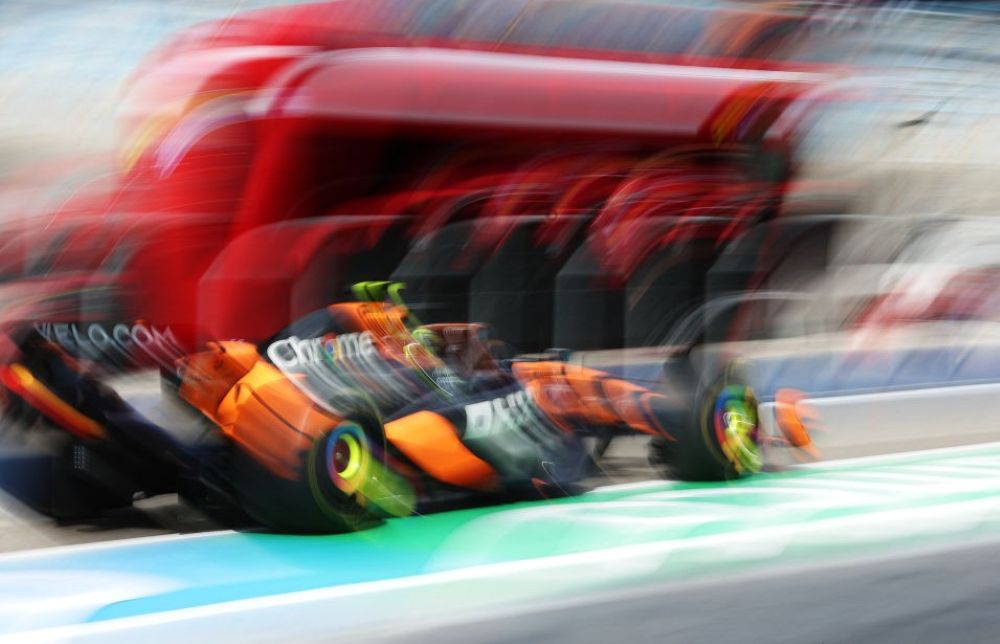
Pre-season testing marked the start of a new Formula 1 season, the first glimpse of the likely competitive order for 2025, and the first signs of where teams would need to work to improve their latest cars.
But it also has a wider influence than usual. If you’re a regular reader, you might have seen at the start of the year how I described the coming 24 months as Formula 1’s ‘Super Season’, with current-spec cars set to run every month until the end of 2026.
That’s because of the new regulations setting the stage for planned shakedown tests in January of next year, with a run in Spain before heading to the Middle East for two further pre-season outings.
In turn, that means at least a launch version of each team’s 2026 car needs to be ready earlier than in previous years, and that in turn means teams need to be working flat out on those cars from an earlier date, too.
As much as teams love to push the mantra that they are only ever focusing on themselves during testing, it’s not true. While they cannot influence what their rivals are doing — at least, not without protesting a car’s legality to the FIA during a race weekend — they can certainly learn from their ideas once they get a clear picture of them.
Pre-season offered that first opportunity as it’s a public test, but because teams will now be trying to work out when to switch focus to the new generation of car, they are also looking at each other’s solutions for this year in a slightly different light, too.
“I think there is there is always an element at the first test where you are going to analyze the competition,” Racing Bulls team principal Laurent Mekies admits. “And yes, you’re right that some of the deeper changes are probably too big of a project to be implemented in what’s going to be a short year.
“Now, everybody will have a different time scale in when they switch to 2026, but certainly in the second part of the season most of us will be looking further forward. So yes, we always get inspiration from what’s going on up and down the grid, and yes, the fact that this last year of the regulations may force us to pick our battles carefully.”
Sauber’s technical director James Key also acknowledges that there is limited value in spending time and effort trying to understand a rival’s concept, given how many months are left before the current learnings are obsolete.
“I think bodywork is the thing that we’ll notice and there are some variations in that, which is interesting as a bigger player than it used to be,” Key says. “So we’re certainly interested in looking at that. But it’s definitely diminishing returns.”
That’s the view of two teams that are not fighting for podiums, wins or titles, but it’s not a simple decision to simply write off one year for the next. 2025 still carries huge value, not least in the direct financial impact as a result of final constructors’ championship positions that can then feed into the budget for future improvements.
“Imagine if you’re one second off the pace, compared to our direct competitors,” Haas team principal Ayao Komatsu says. “There’s nothing you can do, right? Other than doing the best you can.
“So it’s nice to know roughly where you are, but for me, we’re going to find out in Melbourne anyway. that’d be pretty sudden, before going to race one. ‘OK, ’25 is written off!’ But the thing is, we can’t do that anyway. If we are in that position, we’ve got to develop the hell out of this car to try to catch up. We’re not in a position where we can just give up ’25.
“If we finish last this year, obviously the amount of money we lose, that’s not acceptable. It is very simple — we have a few different scenarios depending on where we are, which I agreed with the owner.”
Komatsu’s reference to Gene Haas and his expectations also highlights how different teams will have different priorities. The early competitive order might lead some to switch focus earlier, while it might actually pull resource away from the 2026 project onto the current one for others.
Aston Martin appears to be one such team that is likely to prioritize 2026 more than many: the overall competitiveness of this year’s car is almost secondary to ensuring that as a company, it is operating in the best possible way to take advantage of next year.
“That’s a huge topic for all 10 teams,” Aston team principal and CEO Andy Cowell says. “For us, there are areas of our business that are already 100% focused on 2026. Concept engineering groups are just focused on 2026, because 2025 is done from their perspective.